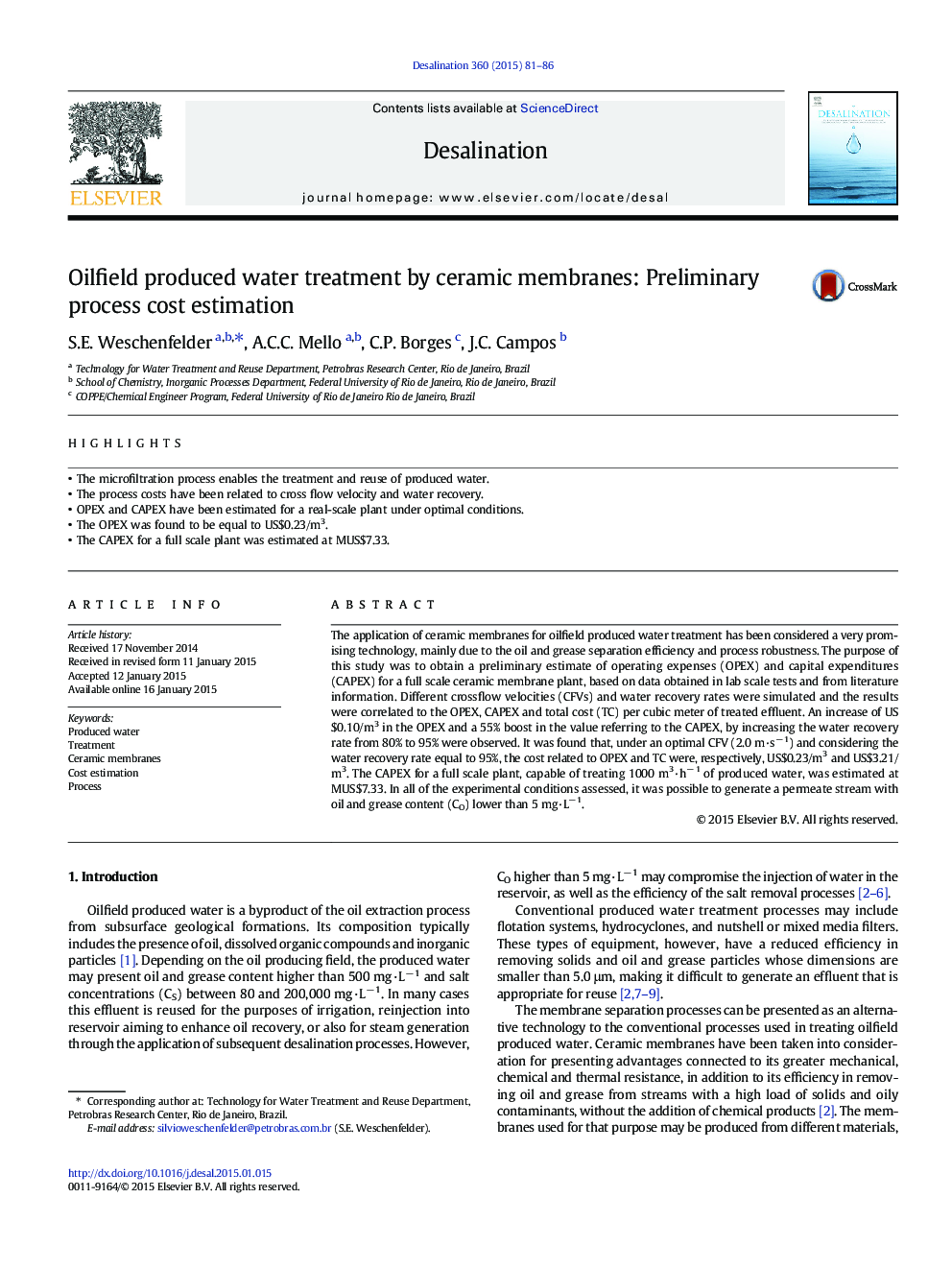| Article ID | Journal | Published Year | Pages | File Type |
|---|---|---|---|---|
| 623236 | Desalination | 2015 | 6 Pages |
•The microfiltration process enables the treatment and reuse of produced water.•The process costs have been related to cross flow velocity and water recovery.•OPEX and CAPEX have been estimated for a real-scale plant under optimal conditions.•The OPEX was found to be equal to US$0.23/m3.•The CAPEX for a full scale plant was estimated at MUS$7.33.
The application of ceramic membranes for oilfield produced water treatment has been considered a very promising technology, mainly due to the oil and grease separation efficiency and process robustness. The purpose of this study was to obtain a preliminary estimate of operating expenses (OPEX) and capital expenditures (CAPEX) for a full scale ceramic membrane plant, based on data obtained in lab scale tests and from literature information. Different crossflow velocities (CFVs) and water recovery rates were simulated and the results were correlated to the OPEX, CAPEX and total cost (TC) per cubic meter of treated effluent. An increase of US$0.10/m3 in the OPEX and a 55% boost in the value referring to the CAPEX, by increasing the water recovery rate from 80% to 95% were observed. It was found that, under an optimal CFV (2.0 m·s− 1) and considering the water recovery rate equal to 95%, the cost related to OPEX and TC were, respectively, US$0.23/m3 and US$3.21/m3. The CAPEX for a full scale plant, capable of treating 1000 m3·h− 1 of produced water, was estimated at MUS$7.33. In all of the experimental conditions assessed, it was possible to generate a permeate stream with oil and grease content (CO) lower than 5 mg·L− 1.
